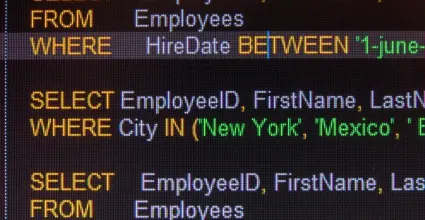Complete guide to using SQLite with Laravel 11


SQLite is an effective and lightweight tool for managing databases, and its integration with Laravel, the popular PHP framework, is a straightforward process. This detailed guide will teach you how to set up and use SQLite in your Laravel 11 project, allowing you to get the most out of both technologies. Below, you will find the necessary steps to get started.
What is SQLite?
SQLite is a C library that implements a serverless, self-contained, high-performance SQL database engine. It is ideal for smaller-scale applications where a complex server setup is not required. Its portability and simplicity make it a popular choice among developers and startups.
Installing Laravel 11
If you have not installed Laravel 11 yet, you first need to have Composer installed on your machine. Then, you can create a new Laravel project by running the following command in your terminal:
composer create-project --prefer-dist laravel/laravel project-nameReplace project-name with your desired project folder name.
Read also
Setting Up SQLite in Laravel
Step 1: Create a database file
Before configuring SQLite, you need to create a file for the database. Navigate to your project directory and run the following command:
touch database/database.sqliteThis command will create a file named database.sqlite in the database folder of your project.
Step 2: Configure the .env file
Open the .env file in the root of your project and locate the database settings. Change the following lines to configure the use of SQLite:
Read also
DB_CONNECTION=sqlite
DB_DATABASE=/path/to/your/project/database/database.sqliteMake sure to modify /path/to/your/project with the corresponding path to your Laravel project.
Step 3: Configure the config/database.php file
Navigate to the config/database.php file and ensure that the configuration for SQLite is properly defined. Typically, the default settings should be sufficient, but it's good to double-check. This file includes an array of connections where sqlite should be defined as follows:
'sqlite' => [
'driver' => 'sqlite',
'url' => env('DATABASE_URL'),
'database' => env('DB_DATABASE'),
'prefix' => '',
],Migrations with SQLite
Now that you have set up SQLite as your database, you can perform migrations. Migrations are an easy way to build and modify the database structure through code. To create a new migration, run the following command:
php artisan make:migration create_new_tableThen, you can define the table structure in the file that will be created in the database/migrations folder. When you're ready, apply the migration by executing:
php artisan migrateUsing SQLite in Applications
The use of SQLite can be seen in situations where the application requires a simple and lightweight database. Ideal for development and testing, SQLite allows developers to work efficiently without the need for a complex database setup. Furthermore, its single file makes data handling and transfer easy.
Conclusion
Integrating SQLite into your Laravel 11 project is a straightforward and effective process. By following these steps, you will be able to take advantage of all the functionalities of SQLite for your development needs. For more news and useful guides on technology and web development, I invite you to explore more content on my blog.



















